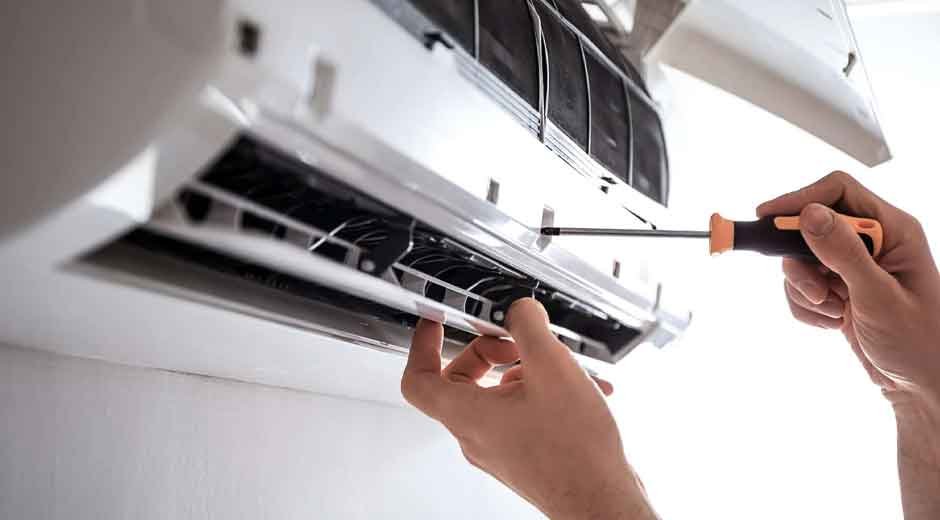Air conditioners are just these odd, metallic boxes many homeowners rely on to do their jobs. When they stop cooling, most people have no idea what’s breaking down inside that box located on their front porch. Yet not knowing exactly what breaks makes it even harder to gauge whether a repair estimate is just or if the technician is pulling a fast one.
Most air conditioners aren’t as complicated as you think. Knowing what’s likely to break means you won’t panic when a technician tells you, “It’s your compressor!” or “The evaporator coil went.” Here’s a breakdown of what actually goes wrong on the inside, and how much you can expect to shell out when these components throw in the towel.
Compressor: When It’s the Most Expensive to Replace
The compressor is essentially the heart of the AC system. It pumps refrigerant throughout the entire thing. When it goes, however, this means the most expensive repair bill could be on the horizon. Compressor replacements generally range from $1,200 to $2,800 based on how large your unit is and how much refrigerant it needs to fill back up.
Of course, the worst part about a compressor giving out is that it almost always happens in those peak summertime weeks when the AC has been overworked. Symptoms of a failing compressor include strange grinding or clicking noises, or it may not turn on at all. Sometimes it seems fine but doesn’t respond when the thermostat calls for cooling.
Wherever you’re located, ensure companies near you offer 24 hour air conditioner repair for emergency situations to prevent an immediate shutdown from ruining your day. There’s nothing worse than waiting three or four days in your house at 90 degrees; some households might not be able to handle without air conditioning.
If your AC is over 10 years old and the compressor goes, many technicians will recommend replacing the entire outdoor compressor unit rather than just the compressor itself. There’s a lot of labor in taking the outdoor unit apart to just swap out the compressor, and you’re paying nearly as much as for a new compressor unit with warranty.
Capacitors: Small Parts, Big Failures
Capacitors are cylindrical parts that kickstart all motors in your AC. They’re one of the most common failures, and good news, they’re inexpensive to replace: generally $150-$400.
If your AC hums but doesn’t kick on or takes a while after the thermostat calls for cooling to start up, your capacitor is probably dead. Sometimes your outdoor fan will rotate sluggishly or not at all. This is something you definitely want a technician for. Capacitors hold electrical charges and can give you a nasty zap – even if the power’s off.
The most annoying part about capacitors? They go when it’s sweltering outside. Capacitors don’t do well under heat, and if there’s a stretch of time where there’s unbearable heat, this could push the capacitor over the edge.
Refrigerant: The Secret Killer
Refrigerant shouldn’t get “used up.” It operates in a closed system, so if it’s low, there must be some leak somewhere. Finding and fixing leaks ranges from $200 to $1,500 based on how severe it is and how accessible it is to find.
Then, add in the refrigerant itself, which has skyrocketed over the past few years. R-410A refrigerant (for most newer systems) ranges from $50-$150 per pound, and most systems need several pounds. Older systems running R-22 refrigerant are even worse, this is impossible to find these days and costs an arm and a leg.
What’s tricky about refrigerant leaks is they sneak up on you. Your AC gradually dissipates cooling power; it might not feel “that” cool in the house, or it just runs for longer until it meets your desired temperature. By the time you realize something’s wrong, you may be on minimal refrigerant, which can wreak havoc on your compressor.
Evaporator and Condenser Coils: When Maintenance Gets Avoided
The evaporator coil lives inside your home (usually in an attic or closet), and the condenser coils are outside with the outdoor unit. Both can have problems, but for different issues.
Evaporator coils freeze, usually due to airflow obstruction (read: filthy filters). When they leak, they’ll cost anywhere from $600 to $2,000 for replacement. Because this involves refrigerant and potentially tearing into ductwork, it’s more complicated than one might assume.
Condenser coils take a beating since they’re outside. They collect dirt/pollen/debris – and when they become too filthy, your AC can’t release heated air properly, and it fights against itself. A severely damaged condenser coil replacement runs $900-$2,800, but this is where maintenance pays off for regular cleanings long before replacement is needed.
Blower Motors and Fans: Parts That Wear Out Over Time
Blower motors blow air through the ducts connecting your home; like any moving motor, they eventually wear down. Replacement costs $400-$600.
The outdoor fan is another huge failure point, it takes a beating year-round from weather exposure. These fan replacements are usually $200-$700 for replacement; if this goes out, your AC will run but never cool unless it can release heated air from its system.
Thermostats/Sensors: Cheap Fixes
Sometimes, it’s the AC components that are fine but instead, the thermostat or temperature sensors have other ideas. Thermostats run between $100-$300 installed, far more useful than other part replacements.
Sensors can force your AC to cycle on and off willy nilly or run forever without ever cooling down to that desired temperature. These are usually less than $200 to fix, some of the cheapest fixes in town.
Contactors and Relays: Electrical Components for Everything
Contactors/relays are switches that provide power to parts of your system; when they fail, certain parts won’t turn on. Fortunately, these replacements range from $100-$300 in most situations.
However, what’s complicated is diagnosing which contactor/relay has failed, especially when one fails and causes multiple parts to fail at once.
Understanding what’s broken down plays a big role in understanding repair costs
Labor plays a huge part in any AC repair, you’re not only paying for parts; you’re paying for diagnosis/understanding how to fix things and licensed/unlicensed professionals who can essentially replace refrigerant safely.
Emergency/or after-hours calls cost significantly more than those during business hours, but when it’s 95 degrees outside and your home creeps toward 85, waiting until Monday morning isn’t ideal.
The age of your system counts too; if you’re past 12-15 years of use and need a significant repair, repurchasing might be worth it versus spending excess money on something that’s likely only going to need more repairs down the road.
Now that you know what’s most likely broken, and how much it’ll cost, it puts everything into perspective regarding estimates versus repairing versus replacing. Your knowledge might come at a premium, but at least it’ll help you sweat less in this non-cooling situation.










